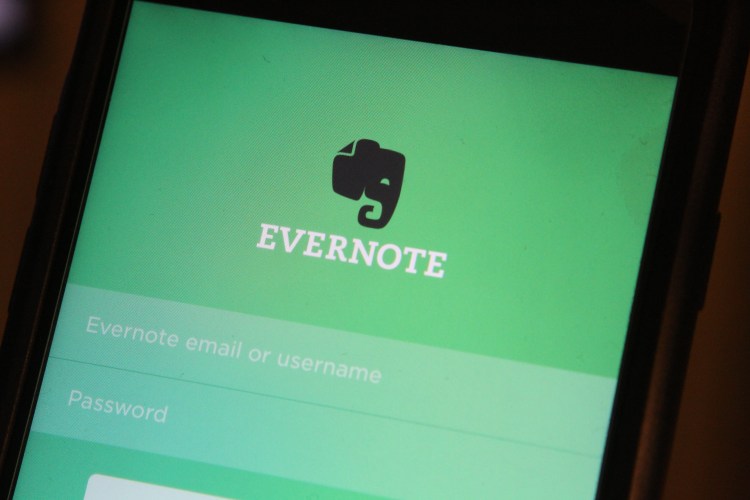Looking back at Evernote’s fall from grace, it’s clear the problems were already apparent to the company when I sat down to interview then-CEO Phil Libin in August 2013.
On the surface, Evernote was on a roll. It had just moved into a new headquarters. It was growing quickly and was valued at $1 billion. And it seemed to be loved by its users. I used it (and still do). But while I have friends who were obsessive about it, Evernote never quite became a critical part of my work routine.
Still, the conversation was mostly upbeat, with Libin talking about his vision for building a company that would last 100 years. But toward the end of our interview, he dropped an interesting tidbit that, in retrospect, hinted at the source of what has been plaguing Evernote ever since.
We were talking about how Evernote was often lumped in with other companies (Dropbox, Box) that let you share and store files online. He noted that Evernote had many, many, many more features than those other companies (though said competitors would probably beg to differ).
He conceded that Evernote had so many features, in fact, that it could sometimes be difficult to explain to newcomers exactly what Evernote was:
“What winds up happening at Evernote conferences is that people go and they say, ‘Oh, I love Evernote and I’ve been using it for years and now I realize I’ve only been using it for 5 percent of what it can do,’ ” Libin said. “And the problem is that it’s a different 5 percent for everyone. If everyone just found the same 5 percent, then we’d just cut the other 95 percent and save ourselves a lot of money. It’s a very broad usage base. And we need to be a lot better about tying it together. And I think we have. We’ve got a few things we’re launching over the next few months to help with that.”
Evernote had spread itself too thin, and there was no core experience. Though Evernote did, in fact, continue to push out new features and products, they never managed to fix the underlying problem.
Last year, Libin stepped down as CEO and became a venture capitalist; Evernote cut 18 percent of its workforce; and new CEO Chris O’Neill promised to turn things around and bring focus to the company by winnowing that long list of features and services.
But the 5 percent problem offers a good lesson about how important it is to maintain a core identity as you build new features and products.
The Silicon Valley mentality fosters a desire to continue building and iterating because if you don’t, you could get lapped by some new competitor who comes along and outflanks you. And sometimes engineers and product developers just get overly enamored with themselves and their ideas and lose sight of the bigger picture.
But adding new features requires discipline. Snapchat, to name just one example, has done a good job of judiciously adding new features that feed back into their core experience.
During an appearance on stage last year, Snapchat CEO Evan Spiegel said his company rejects the overwhelming majority of things his teams build.
“I would say we’d probably release about one percent of the products we’re working on,” Spiegel said. “We build stuff all the time that’s never released. It’s just terrible.”
It’s hard to say ‘no’ after a team has poured their hearts into a project. But the company’s ability to do so is why it’s still easy to explain Snapchat to friends.
Google (er, Alphabet) has at times run the risk of falling into the 5 percent trap. Of course, its search engine is, and probably always will be, its cash machine. But the rest of the company has moved in so many different directions simultaneously that the company’s core mission seems to grow a bit murkier with each passing year.
Yahoo lies at the other extreme, but the result is the same: Years of bolting on services, acquiring companies, and then shutting them down has made it impossible for a succession of CEOs to explain what the company’s core mission is and why anyone, particularly advertisers, should care about it. It’s hard to reinvent the Yahoo core experience when very likely its user base is scattered across a long list of products.
Apple, for now, seems to have mastered the necessary balance. But it’s also showing signs of strain.
In 2015, the company launched an unusually large number of new products and services. The new Apple Watch, Apple TV, and Apple Music haven’t won rave reviews, leading some to wonder if the company pushed ahead a bit too fast. But all of the new products still arguably extend the core iPhone and iOS experience.
Apple remains a company that primarily sells truckloads of iPhones, which lie at the heart of a powerful developer ecosystem. It’s easy to explain Apple.
Sitting here now, it’s hard to see how Evernote reinvents itself and ever regains that same momentum that justified a $1 billion valuation.
But for startups on the rise, it’s a good idea to hit the pause button if you ever find yourself saying in public that you have a hard time explaining what your company does.
If you lose sight of the core experience and fall prey to the 5 percent problem, you likely won’t find the road back out.


